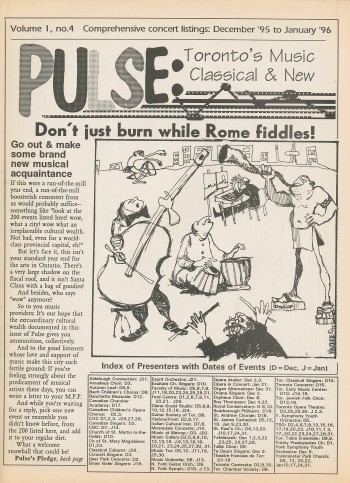Tracking Changes and Changing Tracks
I can no longer remember whether I saw this particular Russian circus live at Maple Leaf Gardens or only on TV. I do not remember its name, or the name of its star clown. But I clearly remember his ginger cat.
It was the late 70s. And it was an unforgettable cat. It did back flips, jumping through hoops; it would balance on two paws, front or back, on the hand or head of the clown, and from that position launch itself into all kinds of spectacular tricks.
As I say, I cannot remember the name of the famous circus, or of its famous clown, or of the unforgettable ginger cat. But I can remember, as if it were yesterday, the sinking moment, during the act, at which I realized that the only “trick” the cat was actually performing was to make itself entirely rigid with paws stretched out front and back, like a furry baton with two forked handles, which the clown could then balance or toss in all kinds of ways.
I can’t say it was a life-changing moment. But it was a moment of insight. Namely this: that the only way to get a cat to do tricks, is to scare it rigid and then do most of the work yourself.
There is, of course another way of having it appear that a cat is doing tricks. (It also works with grandchildren.) It entails honing your ability to predict what the cat has decided to do anyway. Then, just before it does the thing it was going to do anyway, you make it sound as if it was your idea. “George, jump on the table! George, scratch the sofa!” That kind of thing.
People, like the circus clown, who acquire the skill of scaring other living things into rigid compliance tend to do very well in positions of power, at least until the rules change.
People who acquire the skill of predicting what was about to happen anyway and then make it sound as though they made it happen become revered authorities instead. At least until they start believing their own shtick, at which point they too become clowns.
So here’s the question du jour: When the announced trick is not making a cat jump backwards through a hoop, but rather “making our town into a real music city” which of these clowns would you rather trust?
Tracking change
Tracking change, if done right, is an unspectacular affair (whether it be in the realm of concert protocols or musical trends; or in social norms, governing where and what one may smoke; or in what constitutes cruelty to animals or consent). Before you can track change in something, you first have to spend time just tracking the thing, whether it is changing or not.
Perhaps the greatest value of our work here at The WholeNote over the past 23 years will turn out to be that we provided in our listings a consistent, factual, detailed account of the live musical performance within our watershed in our readers’ chosen areas of interest.
Once baseline factual data exists, it then becomes possible to see what changes are actually taking place, or even to predict with some reasonable chance of success, where the musical cat will jump next.
Not Jumping the Rails
In the lives of the musical organizations we keep track of, there come moments of danger and opportunity, requiring clarity of thought. The most predictably risky of these seem to relate to what arts councils call “succession planning” especially in cases where an ensemble or presenter’s identity has become, over time, interwoven with the vision and skills of its artistic leadership. The fascinating thing is how many different successful responses there can be to the challenge.
In this regard there was a memorable moment at the recent Tafelmusik “Safe Haven” concert. One of the company’s core violinists had injured a wrist, and former music director Jeanne Lamon had stepped in at the last moment, joyfully playing in the ranks while the ensemble tore into one of the finest programs in their history. I can only imagine what it felt like for her, during the standing ovation at the end of the show, to know that, in no small part because of her own foresight and consummate professionalism in managing her own exit, the ensemble is still well and truly on track.
It takes a different kind of resolve to say “This thing has had its time. Let’s just let it go.” Last season we saw the Talisker Players, under Mary McGeer’s leadership, decide, right at the beginning of that season to announce that it would be their last. Ahead of this season Toronto Masque Theatre’s Larry Beckwith made a similar announcement – TMT’s 15th and final season is now well under way, with much more celebration than gloom on display, it should be said.
(Beckwith was here at The WholeNote for a podcast interview recently, so you can look forward to much more on the topic of TMT shortly.)
After the final Talisker concert of their farewell season, a music lover who had never been to one of their concerts before, glared at me and said “That was fantastic. How come I never heard of them before?”
So here is a completely shameless plug for TMT’s upcoming show, which runs February 8 to 10 at the Enoch Turner Schoolhouse, one of the many intimate cabaret-style shows TMT has taken there over the years. Titled “The Peasant Cantata and All the Diamonds,” in typical TMT fashion this show features music all the way from J. S. Bach to contemporary cabaret.
The rest of their season is going to be a lovely long goodbye! Don’t miss it.
publisher@thewholenote.com




